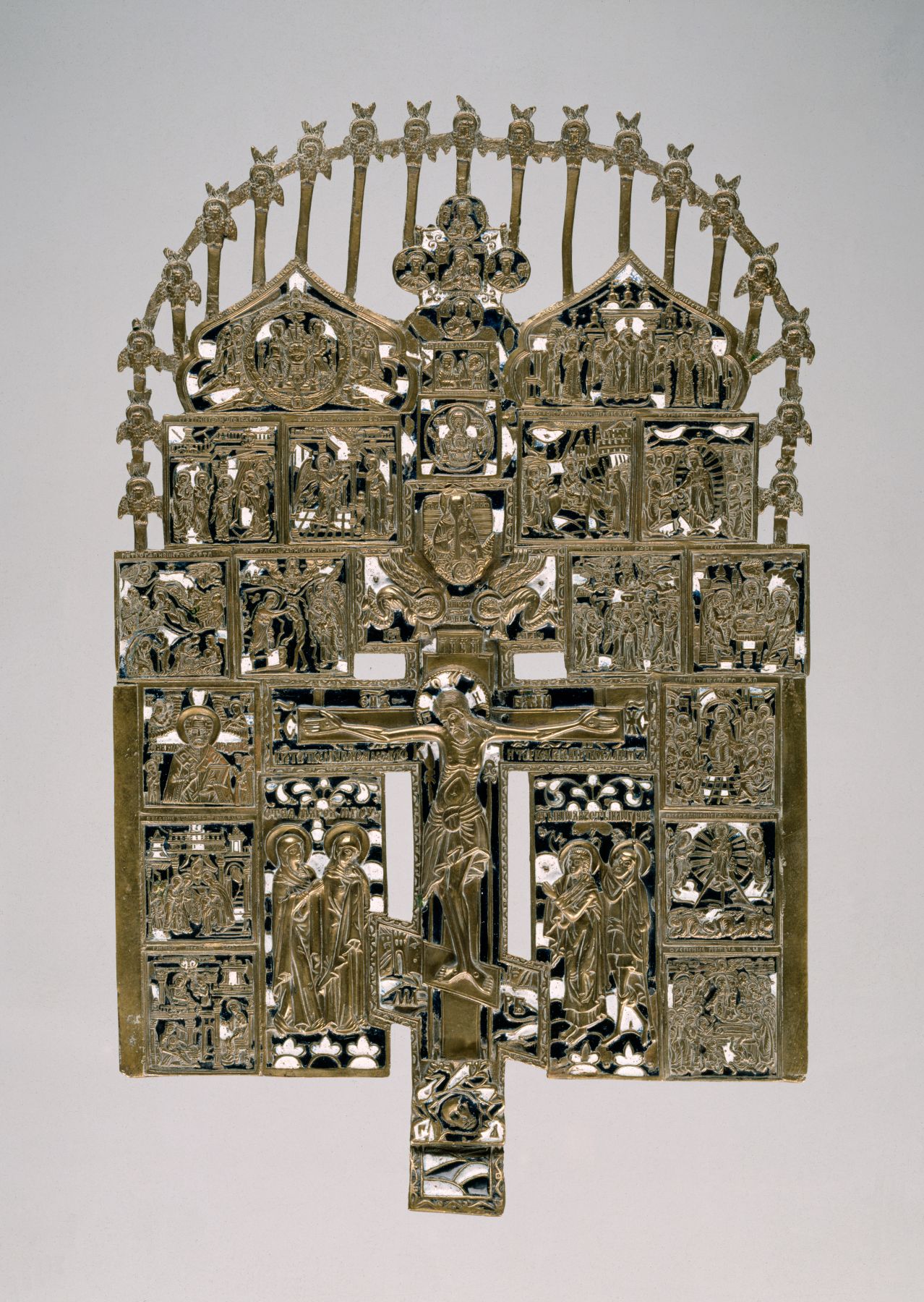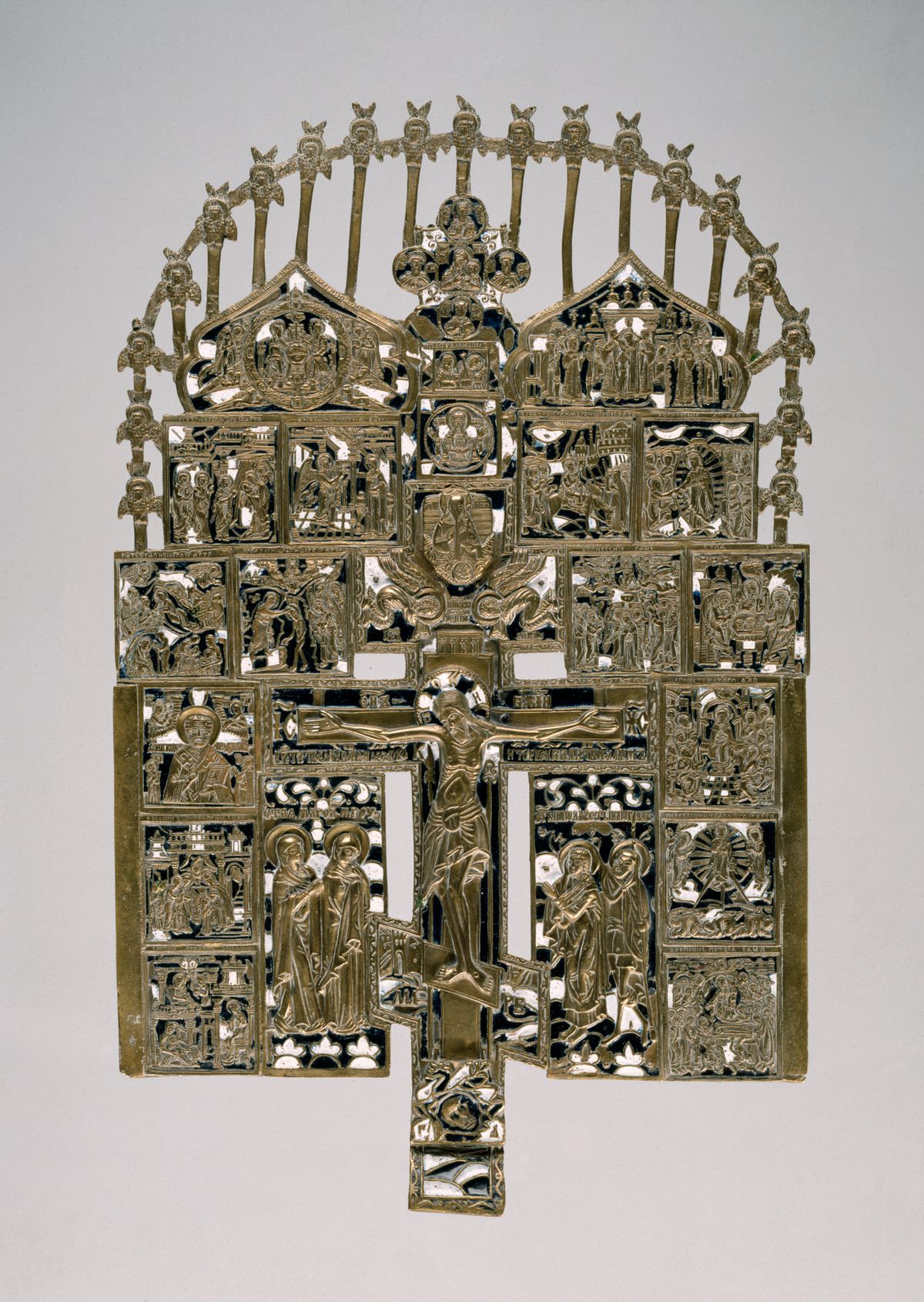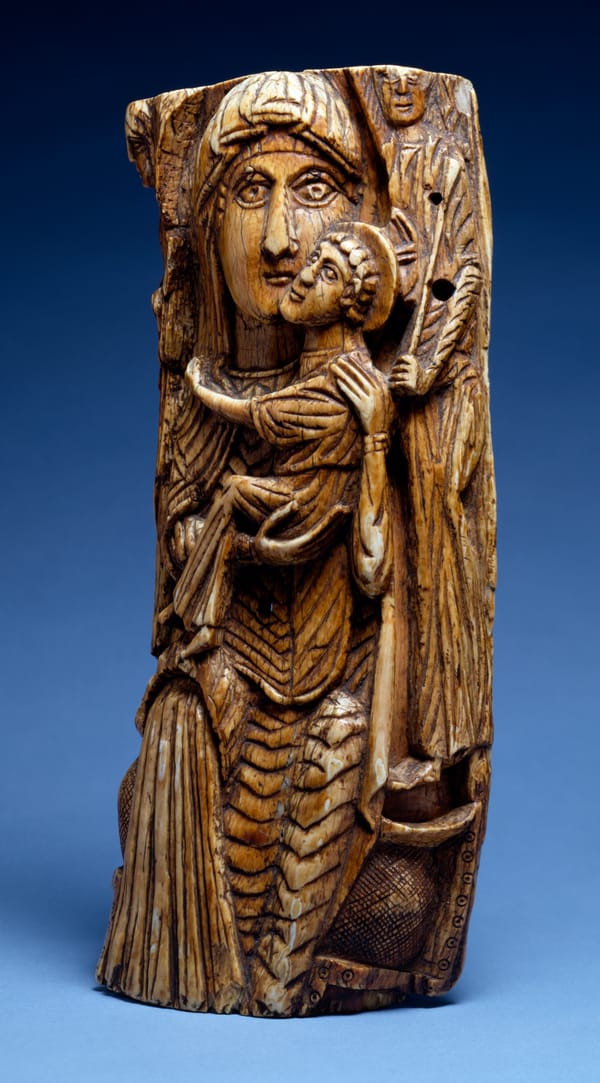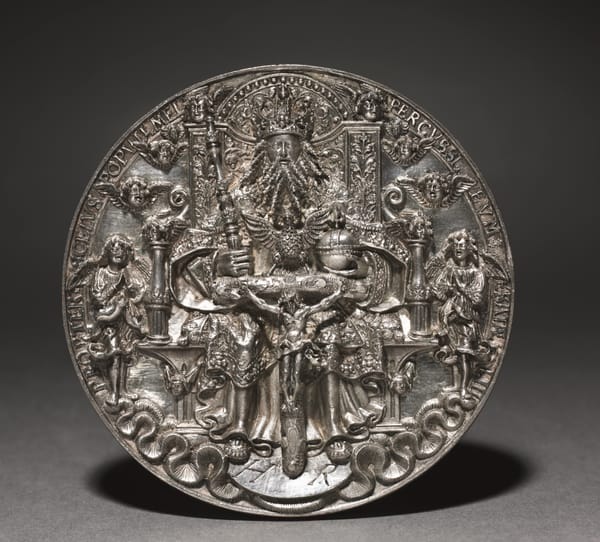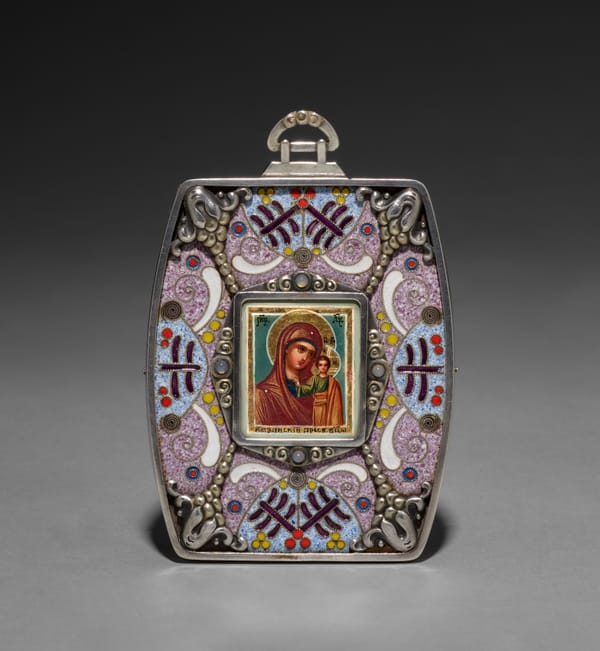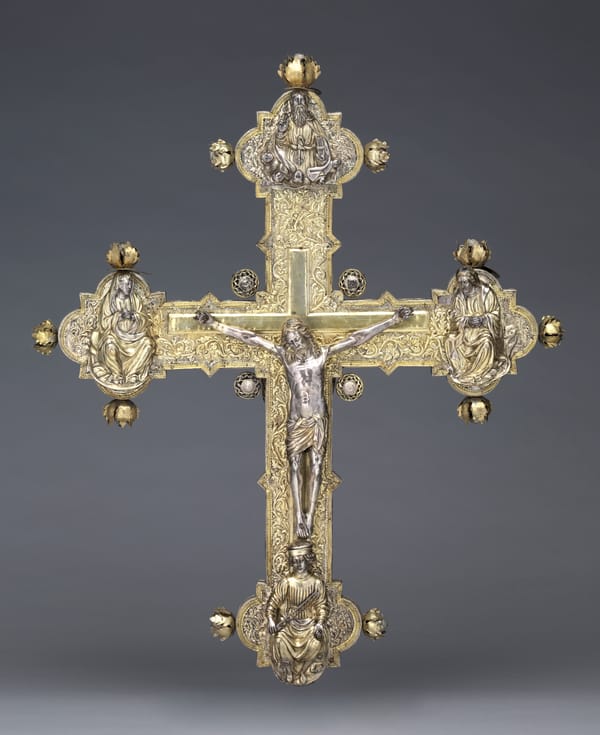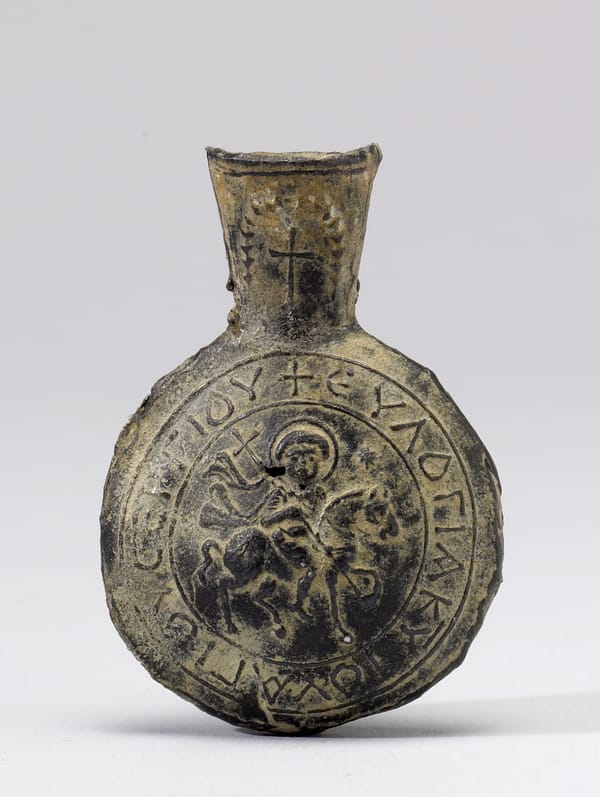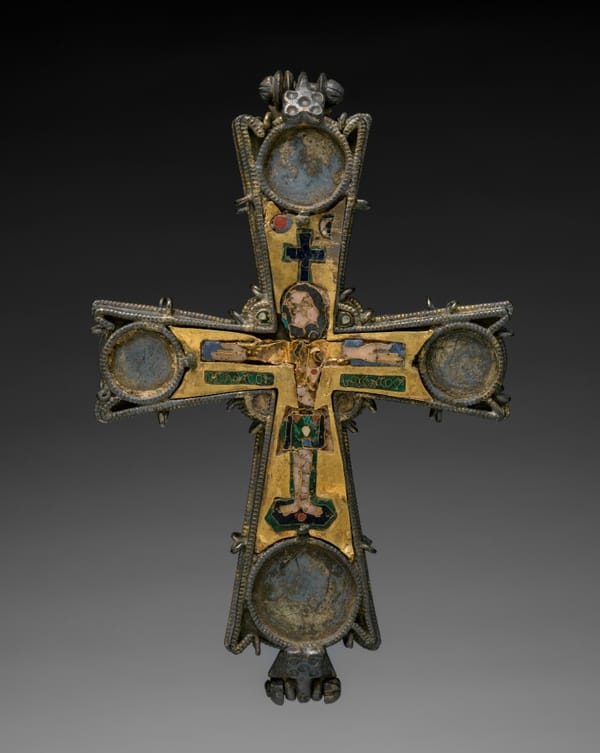Details:
This complex composition served a Russian household's spiritual needs throughout the year by incorporating the whole church calendar in the form of images corresponding to the major feast days. Depicted, starting at the bottom left, are the Birth of the Virgin (September 8), Presentation of the Virgin in the Temple (November 21), Saint Nicholas (December 6), Nativity (December 25), Baptism (January 6), Presentation of Christ in the Temple (February 2), Annunciation (March 25), Entry into Jerusalem (Palm Sunday), Resurrection (Easter Sunday), Ascension, Holy Trinity, Pentecost, Transfiguration of Christ (August 6), and Dormition (Death) of the Virgin (August 15). At the very top are shown the Holy Trinity and Elevation of the Holy Cross (September 14). The Trinity is thus represented twice: as the three angels who visited Abraham (Genesis 18:1-10) and as Jesus Christ enthroned next to God the Father, with the Holy Spirit as a dove hovering between them. The latter scene is accompanied by a phrase from the Nicene Creed: "ascended into heaven and sits on the right hand of the Father". In the Crucifixion in the center, Christ is named "Son of God", flanked by Martha, the Virgin Mary, Saint John the Apostle, and the Centurion Longinus, and blessed from heaven by the Father. Further above is an image of the Virgin with Christ on her chest, symbolizing the Immaculate Conception. This is followed by busts of Saint Peter and the Archangel Michael, and by a second image of the Virgin and Child surrounded by medallions with Christ, Saints Anthony and Theodosius of Kiev, and Saint Nicholas. The row of seraphim that crowns the whole piece is found on other metal icons made in Guslitsy (near Moscow) by a community of Old Believers. The latter are Russian Christians who refuse to accept the liturgical reforms carried out by the Russian Orthodox Church in the 17th century.
